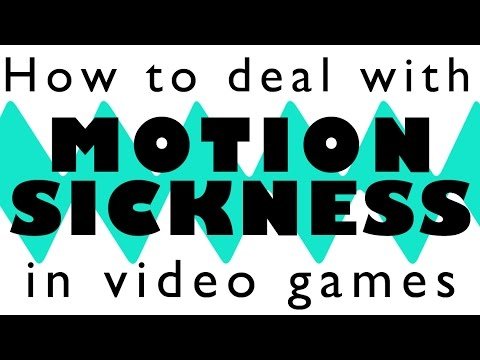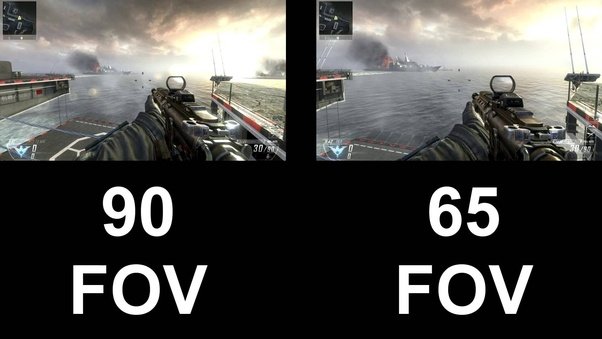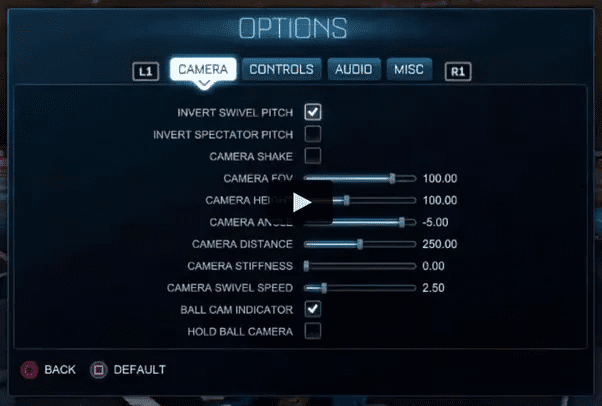We've been told to stay at home and play video games to prevent the spread of the coronavirus. But playing video games can still make you feel sick, from motion sickness specifically. A significant portion of the population gets dizzy from moderate to severe while playing video games in the first person, but it doesn't have to be that way.

If you have headaches or nausea occasionally (or even all the time) while playing, you are not alone. Many other gamers have experienced video game-induced symptoms over the years. Here's why those games make people feel sick, and what you can do about it.
Why do video games make people feel sick?
Human beings have a fine sense of spatial awareness. We are extremely good at knowing when we are standing, when we are lying down, when we are face down, and when we are rolling, falling, or jerking. Thanks to a constant feedback loop between our eyes, our fluid-filled inner ears, and our overall sensory system, we know exactly where we are in our physical space.
When there is a disconnect between one portion of that feedback loop and another, however, the end result is generally moderate to severe nausea. The technical name for this is called "cue conflict".
It is not entirely clear why the cue conflict makes us feel bad, the most prominent theory is that motion sickness mimics the effects of poison and our body wants to purge the poison. We just know that it does make us feel that need to vomit.
So why do we have these symptoms? What about certain video games that cause nausea in some people, signs of severe headaches, or vertigo? To understand why many video games make people so sick, we have to look at two different evolutionary paths: ours and the games themselves. How these two things interact is the key to why the twists and turns of modern games make some people feel sick.
Your fingers and screen could be flying, but your body is still in place
Your body sits perfectly still on your couch, but your eyes sense the game is moving, thanks to the fast-paced 3D action on the screen. Like when you are on a cruise ship, the conflict between environmental signals causes the appearance of nausea in a significant amount of the population.

As video games evolved in complexity, it was possible for games to realistically mimic the movement of 3D characters. The most abundant example of this is the first-person shooter (FPS) genre, which includes games like Half-Life and Call of Duty, where you can see through the character's eyes. As you play these games, you are essentially experiencing the opposite of our previous cruise example.
How to avoid movement when playing video games
It is actually similar to resolution of motion sickness in the real world. To go back to our previous cruise example, one of the best things you can do if you get sick while inside a ship is to get on deck and look at the horizon.
In doing so, it realigns your environmental cues (you feel your body move, and your eyes, when locked within the static horizon, can now sense movement as well). While we can't get the entire room in your house to move exactly in tandem with your character on screen, we can minimize discord between the two.
What can you do to minimize video game nausea? There are multiple approaches you can take, most of which involve minimizing or eliminating cue conflicts in your environment.
Adjust your field of view
The field of view of your video game (FOV) is, without a doubt, one of the most common causes of nausea and headaches in video games. The source of the problem is a disconnect between the field of view of the actual viewer (the player) and the field of view of the game (the game camera).

Typically, console-based video games use a field of view of approximately 60 degrees (or less), and PC games use a higher field of view, such as 80-100 degrees. The reason for this discrepancy depends on the assumed viewing distance of the player.
Console players generally play in a living room-like setting where they are farthest from the screen. Therefore, the total field of view presented to them is smaller, because the screen actually takes up less of their actual field of view.
By contrast, PC gamers tend to sit at desks with their monitors much closer. To compensate for your computer monitor taking up more of your vision, game developers adjust the field of view to make the game camera do a better job and get closer to the same portion of the player's field of view.

Unfortunately, when the screen's field of view is significantly out of sync with the screen's position in the real-world field of view, this can lead to headaches and nausea. This can happen when you are playing a game with a low field of view (60 degrees or less) and you are very close to the screen - a situation that arises when console players sit too close or when a game is transferred from the console an updated field of view is obtained for the PC.
Human vision is approximately 180 degrees. Although things in our peripheral vision are not sharp, they are still there and we still react to them. However, thanks to the limitations of televisions and computer monitors, video games do not present the world of video games at 180 degrees.
Turn off camera shake
Some video games try to add realism by introducing movement in the game camera. It has different names in different games, but you'll usually find it in the settings listed under entries like "camera shake", "panning view" or "realistic camera".

While the effect definitely makes the action of the game seem more realistic, it also makes many people dizzy. In real life, a camera attached to a soldier moving rapidly across the battlefield shook and shook a tremendous amount. But seeing that kind of movement when you're standing is often more than enough to make people feel nauseous. So search your game settings to disable the option, if it exists.
Set up a frame of reference
First, don't play in total darkness. It not only hurts your eyes, but it eliminates the visual references in your environment that will help you avoid your motion sickness. Even in dim light, you can better see other objects in your environment: the edge of the screen, the support where your TV is located, the peripheral furniture.
It should not only have enough light to see objects. but you should, when the game allows it, take your eyes off the screen and look at those things. During your game's loading screens, for example, look at the coffee table or game console under the TV.
Second, try to get a stable reference point on the screen. Gaming companies are investing more research into the entire phenomenon of video game-induced illness, and they found that focusing on stable references, such as the gun or bow in your character's hand, can help prevent that feeling of illness.
Even in games where there shouldn't be a traditional reticle (because the game doesn't have pistols, bows, or projectile weapons) designers can often include a reticle, dot, or other landmark in the center of the screen. If your game has that feature, make sure to keep it enabled (or enable it if it's disabled by default).
If the game doesn't have that feature, some players have even resorted to temporarily pasting a dot of some sort onto the actual screen. Believe it or not, there really is a market for non-stick, reusable game points.

They're designed for gamers obsessed with "out of range" shooting instead of motion sickness, but you can easily use both the suction cup-style display points and vinyl-style display points to help create a stable benchmark on your screen.
The old "go to the deck and watch the horizon" trick for ocean-going tide gauges works entirely to have a stable frame of reference. You can recreate some of the benefits of that frame of reference with video games by using a few tricks in the game and in the living room.
Increase game frame rate
Generally, console gamers have no luck here. Some console games have settings that allow you to check the degree of detail, which increases the frame rate, but most do not.
PC games, however, almost always have some graphic adjustments to the game. Decreasing the quality of the graphics will increase the performance of the game, giving it a smoother movement. You can also upgrade your PC hardware, which will increase performance. If you're playing your PC games with an on-board GPU, it's worth buying a discrete (but even more powerful) graphics card.
Choppy movement is not only visually distracting and unattractive, it is also more likely to cause headaches. Your brain malfunctions with the disconnect between what you want to happen (for example, jump the moment you press the space bar) and what actually happens (for example, jump half a second after thinking about it and press the space bar).
Keep your eyes on your own screen
When you play multiplayer split screen games, try to zoom in on the screen to make up for the reduced screen size. Then do your best to visualize the tunnel in your own section of the screen and ignore the movement elsewhere. Your brain will thank you.
The split-screen setting also makes your individual window much smaller, which means you're experiencing the same field of view, but at 1/4 the size. This is why Goldeneye , an extremely popular game for split-screen multiplayer, was so notorious as to induce disease in its players.
If you're playing a multiplayer split-screen game like Mario Kart or Halo , don't look at other players' screens. There is no safer way to feel motion sick than looking at a screen that another player is controlling, where your brain has zero control over the action.
Check your eyes
If you suspect that your vision is not perfect, we would really recommend having your vision checked. Even if the prescription is not particularly dramatic in strength, having a pair of glasses on hand for your gaming sessions is a lifesaver.

Having astigmatism is the kind of thing that can give you horrible headaches while using the computer for long periods of time and possibly mess with depth perception. With a pair of very smooth prescription glasses, 99% of computer-related headaches and gagging from gaming can go away. The discrepancy in visual clarity between your two eyes can drive your brain crazy.
Just keep playing the game
Another trick is one that will be too familiar to anyone who has had their sea legs on a cruise ship - just go through it. While it is not a solution that works for everyone, many people report that simply playing video games frequently helped their bodies acclimate to the stimulus and decreased the number of key conflicts they experienced.
Use traditional motion sickness treatments
If your video game illness is severe enough - and you love video games enough, you might consider using an over-the-counter motion sickness aid or traditional nausea supplements.

If you don't want to take the medication, some disease-prone games swear by ginger and peppermint supplements (both known to help with nausea). Some people say having a small fan blowing on their face also helps, but we've never tried it. Playing video games with a fan blowing on our already dry eyes seems horrible.
However, when it comes to taking medications, we are not doctors and cannot comment on the long-term use of medications. If you are taking motion sickness drugs, we encourage you to see a doctor and check for newer versions. It's no fun taking a 12-hour anti-nausea pill to kick off your gaming marathon session and fall asleep on the couch an hour later.
For more gaming news, updates, and articles, check out our website at GuruGamer.com.










Comments